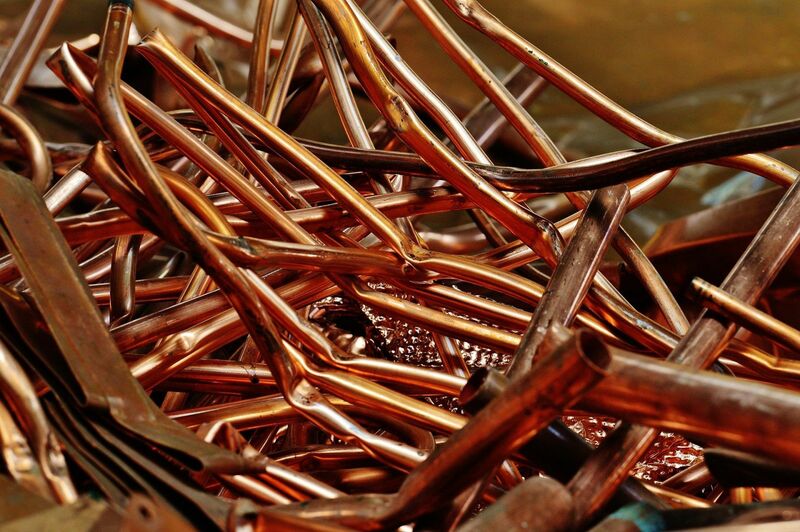
My Q2 Barchart report on Base Metals suggested that investors should be buying the nonferrous metals in Q3 after the Q2 dip and lower prices over the first six months of 2023. The sector that includes copper, aluminum, nickel, lead, zinc, and tin that trades on the London Metals Exchange fell 7.51% in Q2 and was 9.94% lower than the 2022 closing level on June 30.
Copper is the leading base metal, with both LME forwards and COMEX futures outperforming the base metals sector over this year’s first six months. While the futures fell 1.82% over the period, the LME forwards rose 1.71%.
Copper is not the most liquid of the base metals, as aluminum and zinc tend to trade higher volumes. However, copper is not only the nonferrous leader but a barometer of the health and well-being of the global economy. At below $4 per pound in mid-July 2023, copper could surprise on the upside, given its bullish fundamentals.
Copper dropped from the 2022 record high - A bullish trend since the July 2022 low
Nearby COMEX copper futures reached a record $5.01 per pound peak in March 2022.

The chart highlights the 37.1% decline to $3.15 per pound in July 2022. Since then, copper futures have made higher lows and have traded between $3.50 and $4.00 per pound since mid-April. At the $3.854 level on July 13, copper was above the middle of its trading range.
The long-term bullish trend remains firmly intact
From 1970 through May 2005, the all-time high in COMEX copper futures was $1.6475 per pound, the December 1988 peak. Copper broke out to the upside in 2005, surpassing the late 1988 high.

As the long-term chart illustrates, the bullish trend in the leading base metal remains intact in July 2023, despite the decline from the March 2022 record $5.01 high. Copper prices must drop below the $3.15 July 2022 low to challenge the bullish path of least resistance for most of this century. While copper prices fell during the 2008 global financial crisis and the 2020 pandemic, they made higher lows during the risk-off periods.
Copper requirements are rising - A green metal
Goldman Sachs research analysts were the first to call copper “the new oil,” writing that decarbonization will not occur without the red base metal. Since then, many other analysts have agreed that copper requirements for EVs, wind turbines, and other green energy initiatives will support the price over the coming years. Goldman Sachs believes copper prices could reach $6.80 per pound by 2027, over 80% above the current price level on July 13, 2023.
It takes the better part of a decade to bring new copper mines into production. The leading mining companies continue to search the world for further reserves, with some investing in the challenging Democratic Republic of Congo because of its copper reserves. The DRC has a poor record regarding corruption, but the need for new supplies has trumped some concerns.
On June 1, in a Barchart article, “A Mining Legend Says Copper is in the Buy Zone,” I highlighted Robert Friedland’s comments above copper’s price action. Mr. Friedland commented on the weak price action, “It’s temporary. We’re very bullish on demand.” On June 26, he doubled down on his bullish opinion, warning of a “Copper ‘Train Wreck’ as supply stalls.” Mr. Friedland said, “he fears copper prices could jump tenfold.”
Copper supplies are not keeping pace
The trend in copper inventories on the London Metals Exchange validates Robert Friedland’s currency concerns.

Source: LME/Kitco
As the chart highlights, LME copper stocks peaked at just below 340,000 metric tons four years ago. On July 11, they stood at 57,075 tons, over 83% below the level in mid-2019.
The inventory decline signifies the increasing demand. Moreover, if new supplies cannot keep pace with the growing worldwide copper requirements, we could see a significant upward price adjustment reflecting the supply and demand fundamentals.
Futures or the CPER ETF for red metal exposure
Copper may not blast off to the upside this week, this month, or even in 2023, but it may be only a matter of time before the price makes another higher high and heads toward Goldman Sachs’ $6.80 upside target or higher. During aggressive rallies, volatile commodity prices often reach illogical, unreasonable, and irrational price levels, which is likely why the reason Robert Friedland sees a potential for a ten-fold price increase.
The most direct route for a risk position in copper is via the COMEX futures or the LME forwards. The COMEX and LME offer options on the red metal. Market participants seeking exposure to the nonferrous metal can turn to the U.S. Copper ETF product (CPER). At $23.77 per share on July 12, CPER had over $130 million in assets under management. CPER trades an average of 54,970 shares daily and charges an 0.88% management fee.
The continuous COMEX copper futures contract rallied 22.4% from $3.15 in July 2022 to the $3.8545 level on June 12, 2023.

The CPER chart shows the rise from $19.11 to $ 23.77 per share, or 24.4% over the same period, as the ETF did an excellent job tracking nearby copper futures prices.
Now could be the perfect time to buy copper but would leave plenty of room to add on further price declines. A hawkish Fed could cause the price to drop, but the demand fundamentals and supply concerns will likely limit the downside. However, as prices can rise to crazy levels on the upside, sudden selling can also send copper and other commodities to irrational, illogical, and unreasonable prices on the downside. If that happens, I will buy scale-down as the bullish fundamentals remain compelling.
On the date of publication, Andrew Hecht did not have (either directly or indirectly) positions in any of the securities mentioned in this article. All information and data in this article is solely for informational purposes. For more information please view the Barchart Disclosure Policy here.






